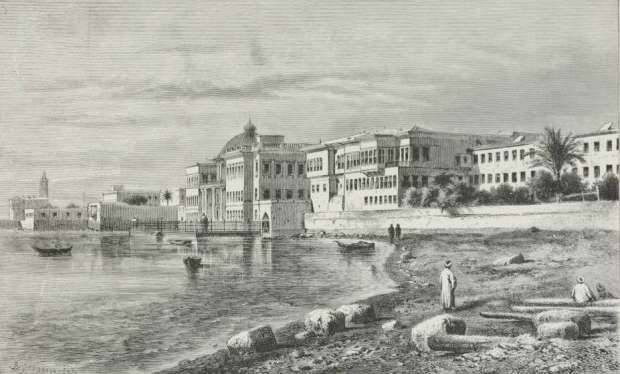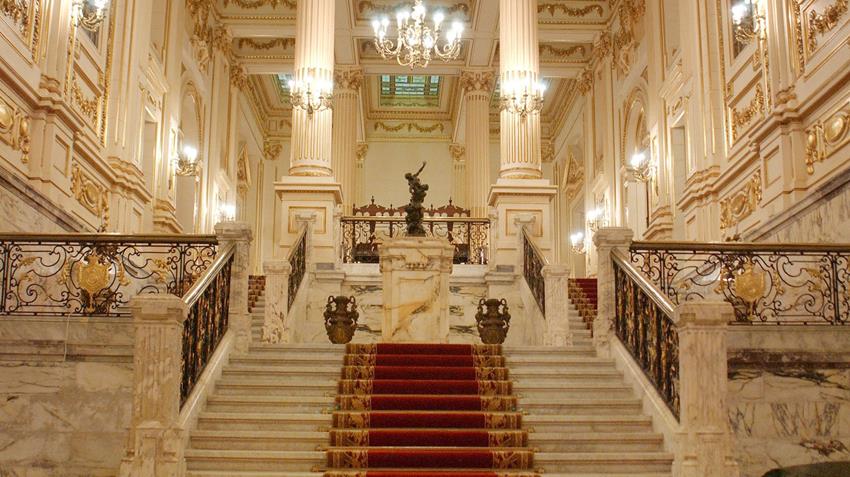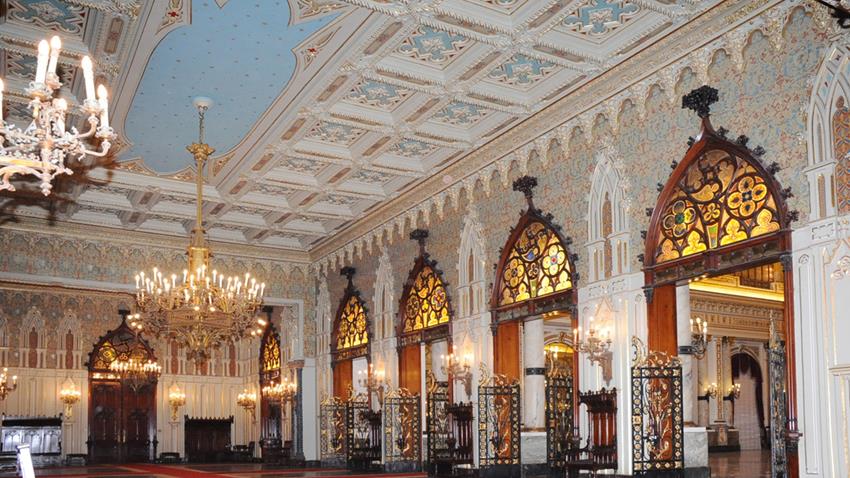
Frescoed ceilings and artisanal corner crowns embellish the high ceilings of Ras al-Tin. The majesty of bygone eras hangs low with the chandeliers, threaded into the collar of elevator workers, stained into glass windows. Fig trees sweeten the garden and ripen the air. Crowning a peninsula off the coast of Alexandria, Ras al-Tin is one of Egypt’s oldest palaces, having been brought into being by none other than Muhammed Ali Pasha.
To date, it is the only palace to witness the climb, stagnation, and fall of a dynasty from start to finish.
As the reception of foreign monarchs, and the seat of the Egyptian Crown when heat waves washed in, Ras al-Tin was a world upon it. The intent behind it was Muhammad Ali’s desire to build a grand chateau in Egypt’s “second capital,” which until then had lacked a royal estate. Soon after its inception, Ras al-Tin—latinized to Promontory of the Figs—became the official summer residence for the Egyptian monarchs and their governments from June through to September.
Alexandria, for six months of each year, became Egypt’s working capital.


The palace is located near the local Arsenal, the naval school and hospital, and sits west of where the Pharos of Alexandria once stood. Overlooking the Mediterranean, Ras al-Tin has become a founding sight on the coastline and an unmistakable structure to any passerby. Stretching across 16 feddans (16.46 acres), the palace is one of the largest of its kind, and breathes in synchrony with French and Italian design philosophies of the 19th century.
Construction for Ras al-Tin started in early 1834 and was completed over a decade later in 1845. Its opening, however, was delayed due to continued alterations; it was finally deemed complete in 1847. Externally, Ras al-Tin takes “the shape of a Roman fortress” as a function of three saray (palace), among them a harem.


Successors of Muhammed Ali were enamored with the structure, and thus had particular interest in restoring Ras al-Tin continuously, erasing time-worn fissures and decaying motifs. It was King Fuad I who commissioned Italian architect Ernesto Verrucci to redesign Ras al-Tin as a replica of the Abdeen Palace in Cairo. Inheriting Italian Baroque for its architecture, Ras al-Tin’s interior decor was an amalgamation of various styles including Byzantine, Renaissance, French, and Modern 20th century.
Additionally, renowned Parisian ébéniste François Linke designed over 1,000 pieces of furniture for Ras al-Tin, most of which were Louis XV and Louis XVI.
Although Ras al-Tin is not ancient, nor is it forgotten, its grandness remains as humbling as anything else Alexandria has brought to life over the years. To this day, it is a testament to the love of beauty, craftsmanship, and feel-good summer swing Egyptians cannot live without.







Comments (4)
[…] صيف الملك: قصر رأس التين […]
[…] صيف الملك: قصر رأس التين […]